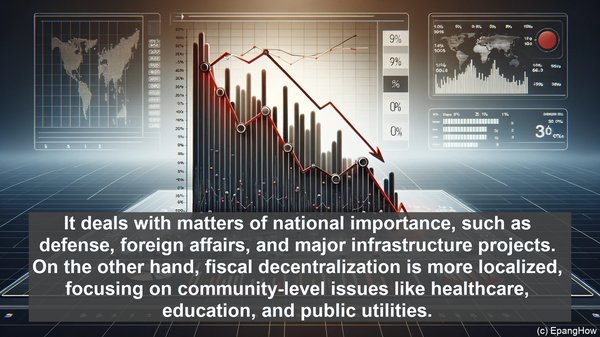Introduction: The Significance of Fiscal Governance
Hello, and welcome! When it comes to the functioning of governments, the financial aspect plays a pivotal role. It determines how resources are allocated, policies are implemented, and services are delivered. Two key frameworks that shape this financial landscape are fiscal federalism and fiscal decentralization. While they may seem similar, there are distinct features that set them apart. Let’s explore these in detail.
Fiscal Federalism: The Essence of Cooperation
Fiscal federalism refers to the division of financial responsibilities between the central or federal government and the regional or state governments within a country. It is essentially a system of intergovernmental fiscal relations. The central government holds the authority to collect taxes, formulate national policies, and distribute funds to the subnational entities. The goal here is to strike a balance between national unity and regional autonomy, ensuring efficient resource utilization and equitable development.
Fiscal Decentralization: Empowering Local Governance
On the other hand, fiscal decentralization focuses on transferring financial powers and responsibilities to the local or municipal level. It aims to enhance local decision-making, tailor policies to specific regional needs, and foster community participation. In a decentralized setup, local governments have the authority to generate revenue through taxes, manage their budgets, and provide essential services directly to the citizens. This not only promotes efficiency but also strengthens the bond between the government and the governed.
Key Differences: Scope and Autonomy
While both fiscal federalism and fiscal decentralization involve the distribution of financial powers, they differ in terms of scope and autonomy. Fiscal federalism operates at a broader level, encompassing the entire nation or a significant portion of it. It deals with matters of national importance, such as defense, foreign affairs, and major infrastructure projects. On the other hand, fiscal decentralization is more localized, focusing on community-level issues like healthcare, education, and public utilities. It allows for tailored solutions and a better understanding of ground realities.

Balancing Act: Cooperation and Coordination
Another crucial aspect is the nature of the relationship between the different tiers of government. In fiscal federalism, there is a higher degree of interdependence and cooperation. The central government acts as a unifying force, ensuring uniformity in policies and resource allocation. In contrast, fiscal decentralization emphasizes collaboration and coordination. Local governments work in tandem, sharing best practices, and learning from each other’s experiences. This synergy leads to effective governance and localized solutions.

The Need for Flexibility: Changing Dynamics
In an ever-evolving world, the dynamics of governance and finance are constantly changing. Both fiscal federalism and fiscal decentralization need to be adaptable to these shifts. While fiscal federalism provides a stable framework, it should have provisions for accommodating regional variations and emerging needs. Similarly, fiscal decentralization should have mechanisms for addressing inter-jurisdictional disparities and ensuring overall coherence. The key lies in striking the right balance between uniformity and flexibility.
